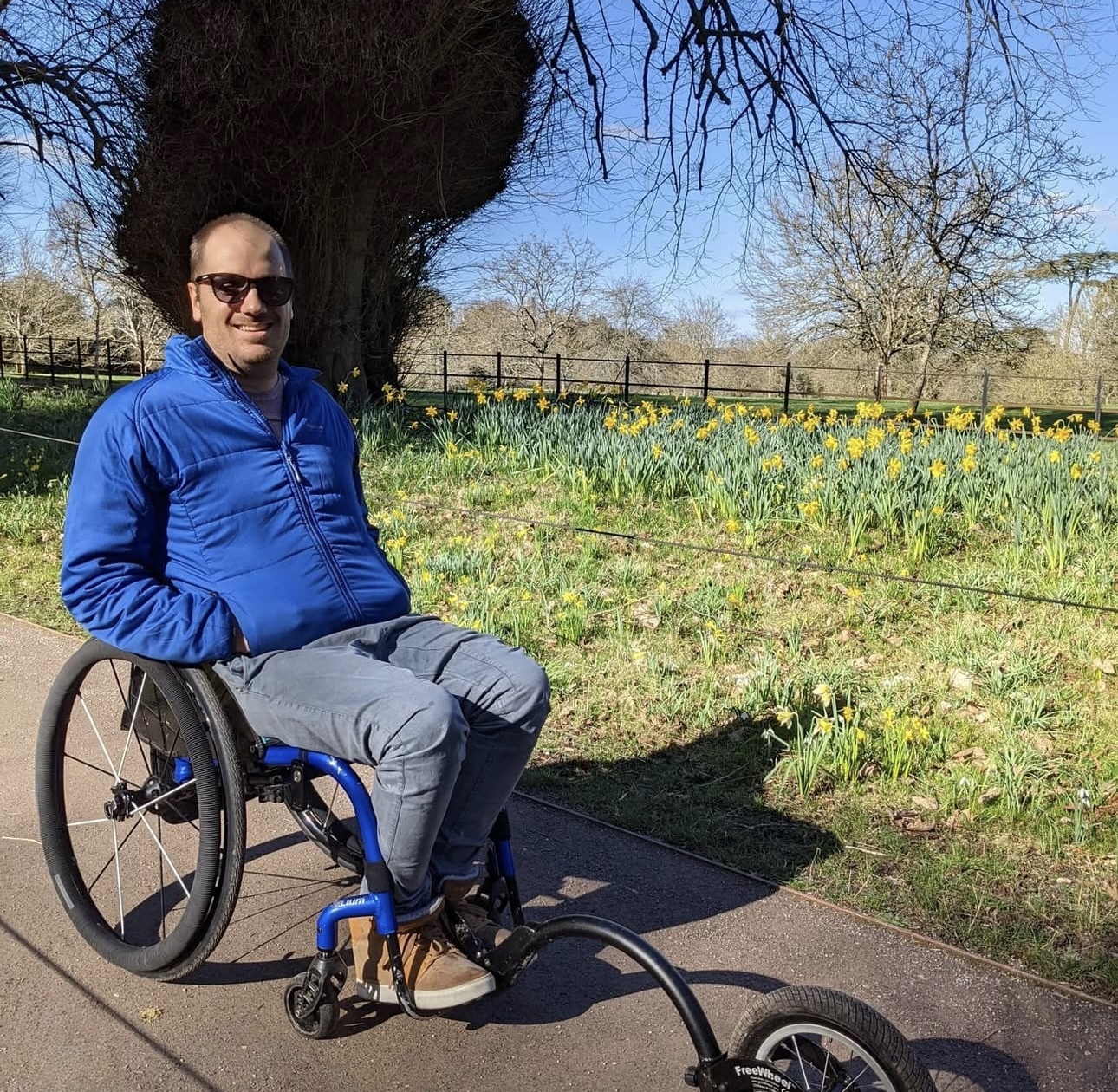Hand Pain from Wheelchair Use - Causes and Solutions
Posted by Living Spinal on Jul 21st 2025
Hand Pain from Wheelchair Use - Causes and Solutions
For many wheelchair users, hand pain is more than an occasional discomfort, it’s a daily challenge that affects mobility, independence, and overall quality of life. This issue is particularly common for individuals who rely on manual wheelchairs for daily activities. Repeated propulsion over various surfaces and frequent grip use can gradually lead to strain, soreness, or even long-term damage in the hands and wrists.
Hand pain can be manageable with the right approach, but it requires a good understanding of its causes and how to reduce its impact. This article explores the most common reasons wheelchair users experience hand pain, the importance of ergonomic equipment, and some practical ways to protect your hands over time.
Why Hand Pain Happens When Using a Wheelchair
The human hand is a complex structure composed of bones, muscles, tendons, and ligaments. When you use a manual wheelchair, especially over extended distances or uneven terrain, the repetitive motion of gripping and pushing the wheels puts significant stress on the hands. The force required to generate momentum, steer, and slow down can strain joints and soft tissues, particularly in the fingers, palms, and wrists.
Some of the most common causes of wheelchair-related hand pain include:
- Repetitive Strain Injuries (RSI): Pushing a wheelchair uses the same muscle groups over and over. Over time, this can lead to chronic inflammation in the wrists, palms, and fingers.
- Poor Wheelchair Fit: A wheelchair that’s too heavy, too wide, or poorly adjusted for the user’s build can increase the effort needed to maneuver, exacerbating hand fatigue.
- Grip Friction and Pressure Points: Conventional pushrims often offer little in the way of ergonomic support, forcing users to grip tightly or awkwardly, increasing the chance of blisters, calluses, and nerve compression.
- Existing Medical Conditions: Conditions such as arthritis, carpal tunnel syndrome, or neuropathy can make the stress of pushing a chair even more painful.
The Role of Pushrims in Hand Comfort
Pushrims are one of the most direct contact points between a wheelchair and its user. Yet in many cases, they’re overlooked when it comes to comfort and ergonomic support. Traditional aluminum pushrims, while lightweight, often provide little in terms of grip texture or shock absorption. For someone propelling a wheelchair all day, the cumulative impact on the hands can be substantial.
This is where innovations in pushrim design have made a noticeable difference. Newer rim styles have been developed with comfort, traction, and joint protection in mind. One example is the use of pushrims that incorporate flexible, contoured materials that mold more naturally to the user's hands. Some of these designs, like RibGrips, are crafted to distribute pressure more evenly across the palm and fingers, helping to reduce friction hotspots and enhance control.
Signs Your Hands Need a Break From Wheelchair Use
It’s not always easy to know when your hands are overworked. The signs of strain can build gradually, so it’s important to stay alert to early symptoms. If you experience any of the following, it may be time to rethink your equipment or propulsion technique:
- Persistent aching or burning in the palms or wrists after use
- Swelling or numbness in the fingers
- A reduced ability to grip or push the wheels
- Cracking skin, calluses, or blisters from overuse
- Shooting pains that travel from the palm into the forearm
Taking these signs seriously is essential to avoid more serious injuries such as tendonitis or nerve compression syndromes.
Simple Adjustments That Can Help Hand Pain Caused by Wheelchairs
Fortunately, there are many ways to reduce or prevent hand pain without compromising your independence. Here are a few practical strategies:
- Optimize Your Wheelchair Fit:
Make sure your chair is properly adjusted to your body. The seat height, wheel alignment, and arm position should allow for a natural push motion without awkward bending or overextension. - Use Gloves with Padding:
Wheelchair gloves are specially designed to protect against friction and absorb shock. Look for gloves with reinforced palms, breathable fabric, and flexible wrist support. - Switch to Ergonomic Pushrims:
If you’re still using basic pushrims, upgrading to more ergonomic options can make a dramatic difference. Rims like RibGrips are designed with contoured ribs that offer superior grip and support. The soft material reduces vibration and disperses pressure, making each push easier and more comfortable on the hands. - Strengthen Supporting Muscles:
Building hand and forearm strength through resistance exercises can help reduce fatigue and prevent strain. Use wheelchair exercise equipment to focus on strengthening routines and stretches that increase flexibility and circulation. - Monitor Your Propulsion Technique:
Avoid jerky or forceful pushes. Instead, aim for smooth, circular strokes that engage the shoulders and arms in a more balanced motion. Using a push-and-recover method can reduce pressure on the hands.
- Take Frequent Breaks:
If you’re wheeling long distances, don’t forget to rest your hands. Even a few minutes of stretching or light massage can relieve tension and prevent long-term damage.
Choosing the Right Wheelchair for Long-Term Comfort
Choosing the right equipment is not just about function, it’s about protecting your health. While your frame, cushion, and wheels are important, your pushrims play a surprisingly large role in how your body feels after a full day of activity.
Several wheelchair users have noted that after switching to contoured pushrims like RibGrips, their overall experience changed. Tasks that once caused soreness or irritation became more manageable, even enjoyable. While no product is a magic solution, using equipment that works with your body rather than against it can make a meaningful difference in your comfort and independence.
When to See a Specialist for Hand Pain from Wheelchair Usage
If your hand pain becomes persistent or interferes with your daily life, consult a physical therapist or occupational therapist with experience in wheelchair mobility. They can assess your technique, recommend equipment adjustments, and develop a treatment plan tailored to your specific needs.
In some cases, medical evaluation may reveal an underlying condition such as carpal tunnel syndrome or joint degeneration that needs targeted treatment. Early intervention can help prevent long-term disability and keep you moving with confidence.
Conclusion
Hand pain from wheelchair use is a common but often overlooked challenge. It can stem from repetitive strain, poor equipment design, or simply the physical demands of daily mobility. But with thoughtful adjustments, especially when it comes to the design and comfort of your pushrims, you can significantly reduce discomfort and improve your overall experience.
Upgrades like ergonomic pushrims may seem like small changes, but they can have a lasting impact on your health. Designs that prioritize grip, pressure relief, and joint protection offer a smart and subtle way to give your hands the support they need.

